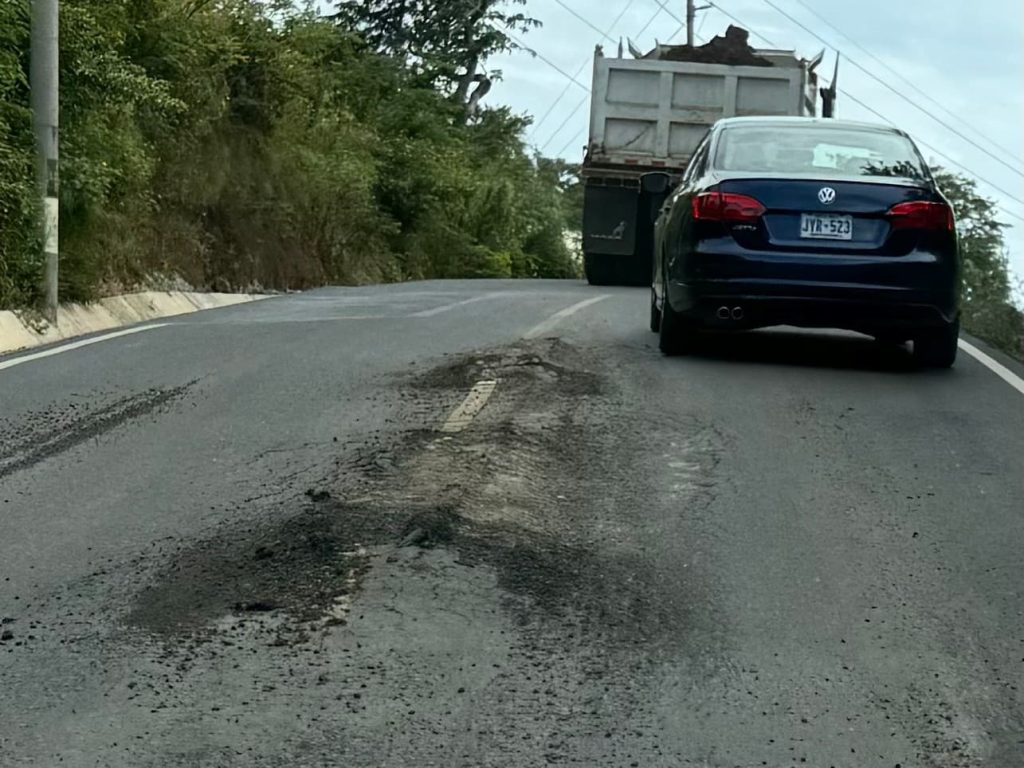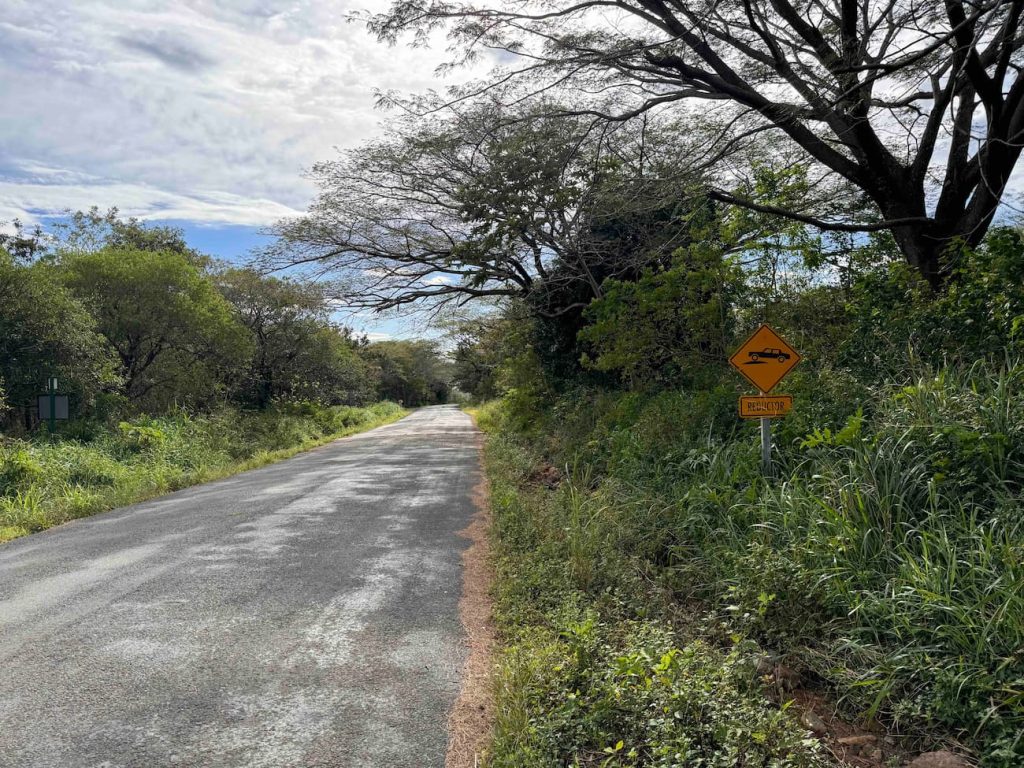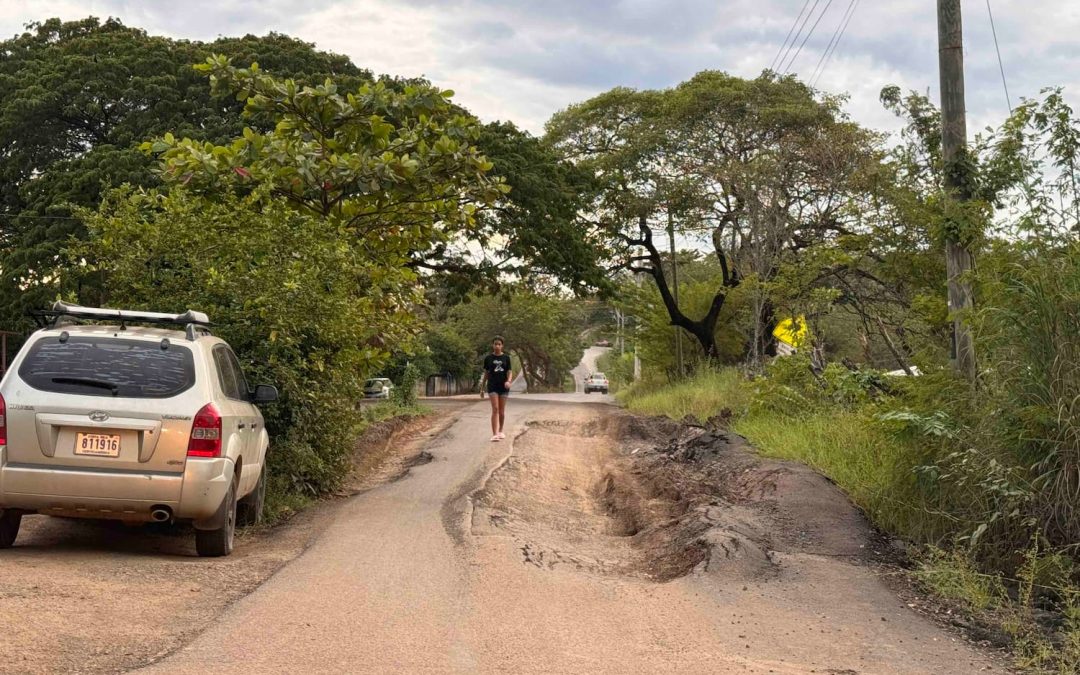This post contains affiliate links.
Of course we all THINK we can drive. But driving in Costa Rica is not for the faint of heart. As northern residents begin to turn their interests to sunnier climates come winter, Costa Rica has become a favored destination. But before you go off booking your trip, and renting a car, there are a few things you need to know.
Roads can be a challenge when driving in Costa Rica
From Google map fails that sent me down nearly-impassable, mud-rutted roads, to aggressive speed bumps that felt like rocket launchers, I’ve had plenty of first-hand experience renting and driving in Costa Rica. These are my tips for having a positive car rental experience and a safe journey driving in Costa Rica.
Having a car to tour enables you to explore so much further than you could otherwise. Costa Rica is an absolutely stunning country, so with the cautions and tips noted below, you are sure to have an amazing time.
Rent a 4X4 AWD for driving in Costa Rica
I wouldn’t consider renting anything other than a 4×4 AWD Jeep or SUV for driving in Costa Rica. There are several reasons. 4×4 vehicles generally have higher clearance, which you will need when navigating through pot holes or mud ruts on unpaved roads. Even if you are not planning to go into areas with secondary roads, Costa Rica can get wash outs from nearby rivers.

If you’re planning to travel during the wet season May – December, you need to plan for this. Even if you’re traveling during the fringe season, just coming out of wet weather, I would suggest planning on encountering mud at some point. And the reality is, all that wet season weather takes a toll on roads well into the dry season. Just say no to anything other than a 4×4 car rental.

Potholes
While you may be used to pot holes on back country roads, in Costa Rica they appear, seemingly out of nowhere, on major paved roads, and sometimes highways. Because the pavement appears otherwise smooth and worry free, drivers often are going fast and need to compensate at the last minute. This could also mean an oncoming vehicle could swerve or over stay their welcome in your lane on a corner. Just beware.
There are theories about why Costa Rica has so many pot holes. Is it due to the volcanic activity? Or the big trucks? There’s likely a bit of both going on.
The laws are different for driving in Costa Rica
Cars drive on the right side of the road in Costa Rica, just like North America and many other parts of the world. But if you’re coming from the UK, Australia or New Zealand, this difference from what you’re used to is worth noting. Having driven is Australia and New Zealand, I thought it might make me somewhat familiar with driving on the left when I rented a car in Jamaica. You do adjust, but instincts run deep in an emergency situation, so just be cautious if you’re coming into a new environment.
But there are other laws and rules which are likely to be different to where you are from. And there are serious consequences for not being familiar with them.
Accidents
Did you know that vehicles involved in an accident in Costa Rica are prohibited from being moved until police attend? Failure to heed this law can void your car insurance, and make for a costly mistake. The necessity for cars to remain exactly in place following a collision also likely helps explain why long delays can happen quickly and unexpectedly.
Parking
You need to be really careful where you park your car in Costa Rica. Rather than issuing tickets to illegally parked cars, vehicle plates are removed and cars towed. Retrieval is expensive and can be delayed, as you will need to navigate various government agencies to get both the car back, and the plates reissued. How’s your Spanish for doing all of this? The car rental company is also likely to charge you for this time as well, since their vehicle was not rentable.
How can you tell is you are parked legally? No parking areas are usually signed, but may not be. A Yellow line on the curb also indicates that it is a no parking zone. But like much other line markings on the roads, paint fades or chips away, and may not have been replaced. If in doubt, paying for parking, rather than street parking, unless you are absolutely certain it is in a legal area, is likely a good idea.
Speed bumps
Known locally and signed as “reductors”, speed bumps appear before school zones in Costa Rica. Unlike North America where speed bumps are marked with a sign at their actual location, speed bumps in Costa Rica have a warning sign long before the actual bump, so if you miss the sign, you might be caught off guard by the bump, especially if the yellow paint has worn off. However, not all reductors are signed, and many that I encountered hadn’t been freshly painted in a very long time. You don’t want to be the gringo last seen air born launching of a reductor!

Trucks
In addition to speed bumps, pot holes, and the necessity for traffic to come to a standstill after a collision, Costa Rica seems to have a plethora of big trucks, seemingly always in front of you when you’d like to get somewhere fast. One local told me, “We have a theory that dump trucks haul around dirt for sport, and usually pull in front of you just as you’re in a hurry.” The best approach is to just chill out. Passing one will likely only get you closer to the next truck further up the road.
Motorbikes
Motorbikes are everywhere in Costa Rica. They’re an economical and popular mode of transport used by many locals. But you need to be cautious of their moves. Motorcyclists will often “lane split” (driving between two lanes of cars), especially if traffic is slow. Motorcyclists will also run up the shoulder to get past traffic. Being a motorbike rider myself at home, I noticed with some amusement that drivers often wear flip flops, and helmets are an optional accessory. It’s no wonder that motorcycle accidents are frequent in Costa Rica. As a vehicle driver, you should always shoulder check – both sides, when changing lanes or turning!

Wildlife hazards
Cows and other wildlife sometimes pop up in unexpected locations. Just travel at a speed which enables you to be mindful and able to stop or swerve if necessary.

Lane lines and crosswalks
Cross walk markings and intersection lines are often faint and sometimes non-existent. This can make staying in your lane challenging, especially if you are preoccupied with directions, or you’ve been caught in a shower. If in doubt while driving through a village, look up for lights. That may be the only indication of an intersection you’ll see.
Navigation
While Google maps works just fine in Costa Rica, it’s worth using a navigation app which continues to offer directions in off line mode. Since there are a number of areas in Costa Rica, particularly mountainous regions, where cell coverage is dropped, it’s wise to use an app like Wise for navigation which will continue to function even without data. In addition to working offline, Wise also posts local hazards, recorded and updated live through users. This can be very helpful for timely notices of accidents and nasty potholes.
Comparing car rental costs in Costa Rica can be tricky
If you’re planning a trip to Costa Rica, you’ve likely gone online to look up the best deals for renting a car. Comparing the true cost of renting a car in Costa Rica can be a challenge, since by law renters are required to provide proof of third-party insurance or purchase it there. But not all rental companies include this expense in their online booking estimate. So it’s not uncommon to arrive and be hit with an additional hefty expense for insurance on top of the rental.
However, if you know this in advance, it is possible to arrange for a letter from your home insurance and present this at the time of booking and pick up. I am from Canada, and had car rental insurance through my Mastercard, underwritten by Allianz. I contacted Allianz in advance, shared my car rental plans, and they provided a written letter guaranteeing my third party insurance, which was accepted by my car rental company Vamos.
Car rental options
My preferred car rental company in Costa Rica is Vamos. They are locally owned and operated. Their vehicles are new, well maintained, and they are reasonably priced. A Vamos representative will meet you at the arrivals area outside and take you to their rental lot a short drive from the airport. Employees speak fluent English, and they thoroughly explain what you need to know to drive in Costa Rica. In fact, much of the insider intel I received and have shared in this article is courtesy of the employees at Vamos being so thorough. They are up front about costs, and guide you through how to best obtain third party insurance coverage – either through them, or from your home provider, noting exactly what is required for proof before you leave home.
Pricing transparency
They’re critical of competitors who are not nearly as transparent about cost estimates and final rental agreement prices, which I found refreshingly honest. Additionally, all Vamos rentals include a local Android phone with unlimited data, and the Vamos app downloaded, making navigation easy and cost efficient. You could even use their Android phone for local calls for free if you want to! All Vamos rentals also include a small cooler, which is a nice touch for keeping a lunch cool, and a supply of water at the ready for beach or hiking days.
Vamos will also arrange drop off at your desired location, which can be helpful, rather than having to return it to the San Jose or Liberia airport, depending on where you departed from. They also ask you to return the car at the same fuel level as departure, usually around ¾ full. I found this helpful for refueling in a smaller center outside the city, eliminating the scramble in an unfamiliar city, looking for gas – usually with a plan to catch!
Vamos has locations close to both Liberia airport and San Jose.
Other car rental options
Of course if you prefer to deal with a North American rental car company, there are plenty of familiar options. Hertz, Budget and Avis rent from Liberia airport in the Guanacaste region. Hertz, National, Alamo, Enterprise, Budget and SixT all rent out of the San Jose airport. Just be sure that if you are booking direct online or through a third party booking site like Expedia, that you compare prices with the knowledge you now have about how third party insurance is often not included in the quote. Be sure to read the fine print about this or inquire. If it is not included in the price quote, it will be charged at the point of rental, necessitated by Costa Rica law.
For more information, be sure to read “How to Avoid a Costly Costa Rica Car Rental” And for a deep dive into Costa Rica as a destination, be sure to check out “Things to Do in Costa Rica: Guanacaste Region“


